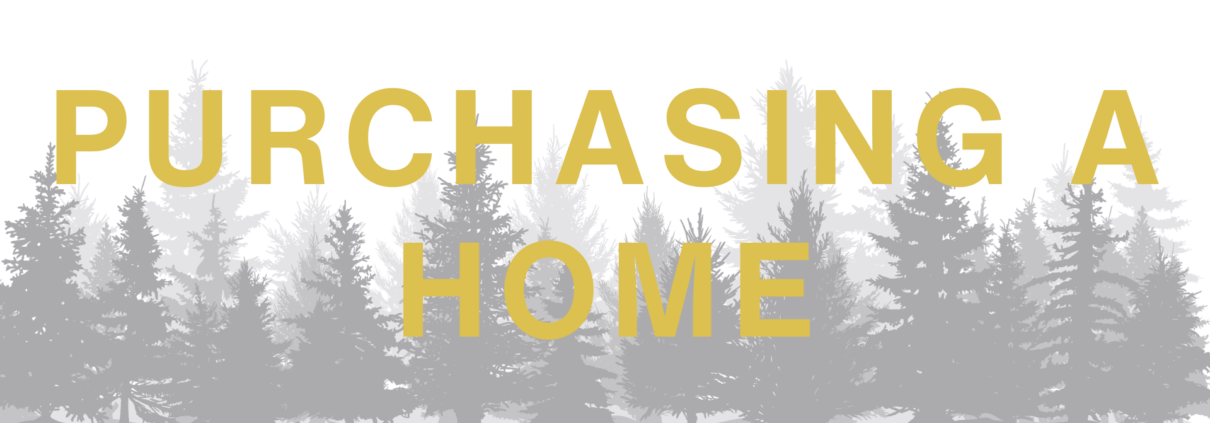Purchasing a Home
Are you thinking of purchasing a home? It can be a complicated process, even for homes without restrictive covenants. The SCHA is here to help you every step of the way. Speaking of steps . . .
Step 1 – Get Educated
Are you ready to buy a home? Do you feel confident that you can commit to the time and expense of home ownership? Are you familiar with the real estate closing process? These are all questions you should address at the start of the process. Owning a home is a big responsibility, and this responsibility starts during the purchase process.
The SCHA offers multiple educational resources to help you, including:
- Financial counseling and budgeting assistance
- First-time homebuyer classes
- New development homebuyer forums
- Post-homebuyer classes
- Landlord / tenant resources
These resources are free and available to everyone, even if you’re not purchasing a deed-restricted home. Please see our Education page for more information.
Step 2 – Talk to a Lender
Once you’ve decided you’re ready to buy a home, your next step is to talk to a lender. A lender will work with you to determine both your maximum loan amount and what you’re comfortable paying each month. This will help you narrow your search when you begin looking for specific homes.
What should you look for in a lender? Try to find someone you’re comfortable with. You’ll be working very closely with your lender throughout the closing process and providing him or her with a lot of your detailed financial information. You also want someone who can explain anything you don’t understand. A good lender will be a coach and mentor throughout your home search.
If you’re thinking of purchasing a deed-restricted home, we recommend using a local lender who is familiar with our restrictive covenants. Sometimes national or out-of-town lenders won’t accept the terms of the restrictive covenant. Whomever you choose, please try to ensure that the underwriter receives a copy of the restrictive covenant as soon as possible after you go under contract on a deed restricted home.
Finally, there are down payment assistance programs available to certain homebuyers. You’ll want to make sure your lender is aware of these options and is able to work with a variety of programs.
Step 3 – Find a Home
Now that you feel comfortable with what you can afford, you can narrow your home search. A Realtor® can be very helpful with this, as they have access to the most up-to-date listing information. As you are working with your Realtor®, you should provide him or her with the list of things that you’re looking for in a home – both those things that are nice to have and those things that are non-negotiable. Are you looking for a home with a garage? Are you looking for a yard? Do you prefer a condo with minimal maintenance required? Let your Realtor® know. They will provide access to the MLS and provide up to date information as to what deed-restricted properties are available for sale.
Step 4 – Apply (Deed-Restricted Properties Only)
If you’re purchasing a deed-restricted property, you will need to qualify through the SCHA.
One of the most common questions we’re asked is what the work and/or income limits of deed-restricted properties are. Unfortunately, there is not an easy answer to this because each property has its own restrictive covenant and terms. The best way we can serve you is for you to submit an application so we can review your individual situation once we have all of your information.
We have included our general applications below, you will need to have a property identified before applying. SCHA does not do any blanket applications.
You may also want to have the following documentation handy before beginning your application:
- Two most recent paystubs
- Prior year W-2 (income verification only)
- Prior year federal tax returns (income verification only)
- First-time homebuyer class certificate (first-time homebuyers only)
- Lender prequalification or preapproval letter obtained within the last 30 days of submitting application – due to fluctuating interest rates
The application will walk you through any other documentation you may need.
In order for us to best serve you, please submit the entirety of your supporting documents at one time. Missing documents will make your application incomplete and we cannot guarantee review of missing items before deadlines. Please review the instructions on the top of the application for the list of required documents.
Step 5 – Contract to Closing
Once you find a home that you like (and you’ve been approved through the SCHA if it’s a deed-restricted home), you’ll put an offer on it. If the seller accepts your offer, you will go under contract. This is the time for the team that you’ve assembled in the prior steps to shine. You’ll have a lot of deadlines to meet and decisions to make, and your team will be there to support you every step of the way. If you’re purchasing a deed-restricted home, you will also want to make sure that you understand and are comfortable with the restrictive covenant(s) on the property.
The final step will be your closing, where you actually take title to the property. By this point, you should be comfortable with all of the terms of the purchase and any legal restrictions on the property. Be prepared to do a lot of signing! At the end of the closing, you’ll get your keys to move into your new home. Congratulations!

